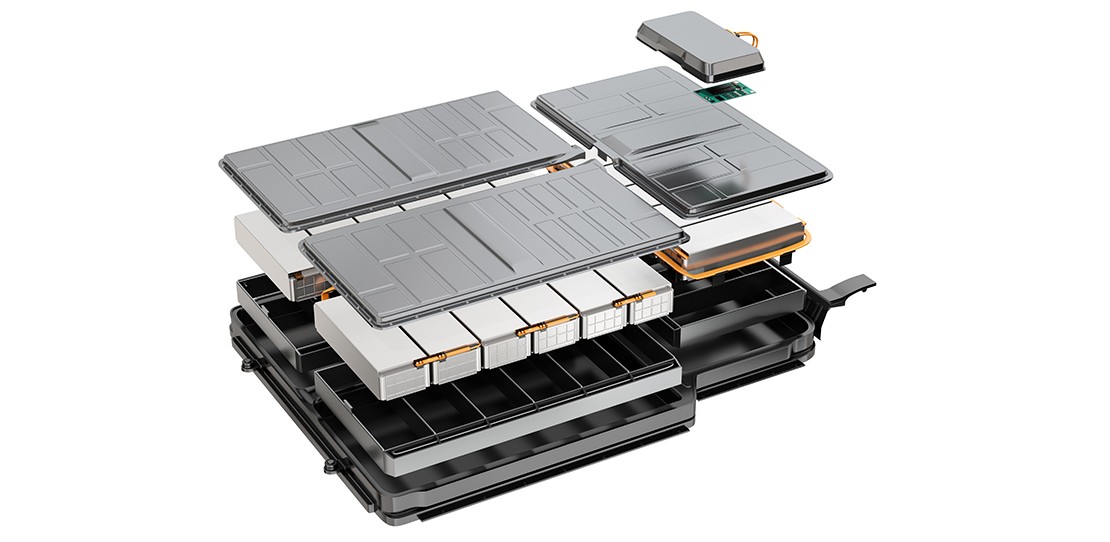
The Power of Synergy to Achieve EVs’ Sustainability
BUSINESS INSIGHT
TRANSPORTATION | 7 MINUTE READ
NI acquired Kratzer Automation AG’s Test System Business, expanding electric vehicle (EV) test capabilities for automotive customers.
AUTHOR: Arturo Vargas Mercado, Industry Marketing Manager, NI
EVs were nearly 10 percent of global car sales in 2021, which was four times their market share in 2019 (IEA, 2022). Current projections suggest that the combination of regulatory pressure and shifting consumer demand could lead to the domination of EVs in a few short years. Legislation such as the $430 billion climate change bill in the U.S. seeks to further accelerate this trend to combat climate change and hasten our move towards a more sustainable future by significantly reducing carbon emissions (Reuters, 2022).
With the uptake in EV adoption, now comes the question of how to make it sustainable as we scale up. There are many aspects to sustainability to consider. For example, our grid cannot currently support an all-electric fleet, which underscores the importance of renewable sources of grid energy and charging infrastructure with colocated fixed energy storage. Another aspect is the need to comprehensively understand a battery’s lifecycle and usability so we aren’t just throwing a bunch of materials (e.g., cobalt, nickel, lithium) in the trash when they could go into second-life applications. Finally, to address sustainability while meeting the scale needed to keep up with EVs’ growth, we’ve seen strategic moves in the industry such as bringing the supply chain closer together, creating less dependency on certain materials, and creating EV platforms such as GM’s Ultium to gain efficiencies.
While everyone in the EV race is trying to get an edge and take advantage of the EV market’s projected growth, there are “major opportunities and challenges for traditional original equipment manufacturers (OEMs), new-entrant OEMs, captive finance companies, and dealerships.” (Deloitte, 2020)
The opportunities and challenges of course expand beyond automotive borders; for example, into the test and measurement industry where NI’s passion for EV test has led us to make strategic decisions and invest significantly to enable our customers to Engineer Ambitiously. Most recently, the acquisition of Kratzer Automation AG test system business (Kratzer) has better positioned NI to enable EVs’ impressive growth without compromising safety and cost by adding test capabilities to our portfolio and enhancing connections with automotive customers leading the EV transformation.
The Kratzer Advantage
Kratzer is a market leader in automotive test with a strong history of integrating and delivering large-scale, high-reliability automotive test solutions that for decades has integrated and successfully delivered reliable, scalable, and flexible test benches and software for testing electric vehicle drives, batteries, and traditional powertrain. With solutions installed at more than 80 premium OEMs and Tier 1 suppliers along with more than 5 thousand battery test channels installed worldwide, Kratzer has a preferential position in the market. As the EV revolution has taken place, Kratzer’s expertise has made significant strides around battery test, which greatly align to NI’s approach to test:
1. Flexibility through software:
Aligned to NI’s belief that giving engineers options helps them focus on doing their best work, Kratzer flexible software greatly complements NI’s openness to help them program test sequences, develop test modules, and collect test results using the tools they’re most comfortable with already. Additionally, consistent user interfaces make the process of implementing, executing, and reporting on a test less burdensome on engineers and operators.
2. Testing before testing:
We recognize the importance of simulation to expedite the test processes in all aspects of the vehicle, and the battery is no different. Kratzer’s ability to use simulation of battery test sequences before the start of the test avoids test faults, retests, and most importantly, saves time.
3. Connect the process and the product:
Traceability is a big need in the test world, not only for test results but for the products themselves. From the start, NI’s software-centric solutions have empowered engineers to handle their needs for traceability, logging, analysis, and data-based decision making. In line with that capability, Kratzer’s simplified and complete DUT control and field management goes from storage to assembly, to the test station and post-processing, enabling the level of traceability of the DUT that leads to avoiding recalls.
4. Manage cost:
Saving cost without compromising on quality is always desirable—but not always attainable in the long run. Aligned with NI’s platform-based approach that enables system growth with lower incremental cost, Kratzer’s approach considers total cost of test and ownership, and helps customers realize savings from big expense areas. These areas include energy usage, where high levels of efficiency are achieved by via a large DC link that distributes energy between without burdening the grid.
The Power of Synergy
One of the most important areas of synergy we’re expecting from the acquisition is software, where combined decades of software development and experience will help engineers tackle some of the most significant EV test challenges they face:
- Constant changes
- Underutilization of assets
- Lack of automation
- Fragmented data
- Reliability of equipment
- Speed of root-causing
We’re convinced that the solution to each of these challenges heavily relies on the right software and how it connects across the product’s development and lifecycle. Specifically for battery test, the need for this software-connected approach is even more urgent because of its impact on everything from the profitability and desirability of the EV to the risk of recalls and brand damage.

As we move forward in the integration of Kratzer and NI, we’ve more clearly seen the future of NI battery test software when powered by Kratzer’s PAtools TX software. NI’s lifecycle analytics, measurement capabilities, and openness greatly fits with the application-specific capabilities of PAtools so that at all levels of test engineering and test management, there will be huge benefits for all stakeholders, from engineers to lab managers:
Hardware interfacing
Leveraging NI’s measurement hardware, battery cyclers, and instruments seamless integration capabilities, engineers can use hardware abstraction layers, plugins, and other automated tools for mapping channels, saving time from configuration, setup and reconfigurations when responding to changes.
Test execution, engineering, and operations
NI controllers running on the NI Linux Real-Time OS will bring openness and long-term support to avoid migration pain when controlling and programming test sequences. Additionally, with the combination of out-of-the-box functionality for battery test with customizable WebUIs, both NI and Kratzer software will help engineers streamline the test development process and optimize their workflow to reduce the risk of having to rerun tests due to operation errors and speed up test development to respond to time-to-market pressures.
Lab management
At the higher level of the solution stack, tools like NI SystemLink™ software combined with Kratzer’s application software can bring together data storage, system and asset management, and test scheduling that helps improve operations at the facility level. These tools can optimize energy usage, reduce CO2 footprint, increase utilization, better manage downtimes, and ensure reliable data collection from the whole battery test facility—down to individual DUTs, which can then be analyzed and used to drive insights and make decisions.
As we turn the vision into a reality, there are multiple immediate benefits from the synergies between NI and Kratzer. Benefits range from a global footprint, a large install base of thousands of battery test channels, and most importantly, a wealth of battery and overall EV test knowledge. With mutual access to IP and experience, we can accelerate delivery of features and solutions to our customers. In line with NI’s view of fostering a strong engineering ecosystem, these benefits also extend to the vast network of NI Partners who are experienced in integrating custom solutions from single test stations to full line integrations. Combining synergies with Kratzer and NI partners, we’re confident we can deliver solutions to EV and battery manufacturers. We will help them make better batteries, accelerate their time to market, and lower their total cost of test so they’re better prepared to meet the demand and scale that the EV revolution is bringing.
The registered trademark Linux® is used pursuant to a sublicense from LMI, the exclusive licensee of Linus Torvalds, owner of the mark on a worldwide basis.
An NI Partner is a business entity independent from NI and has no agency or joint-venture relationship and does not form part of any business associations with NI.
_____________________________________________
1 Global Supply Chain of EV Batteries - International Energy Agency. July 2022
3 https://www2.deloitte.com/us/en/insights/focus/future-of-mobility/electric-vehicle-trends-2030.html


